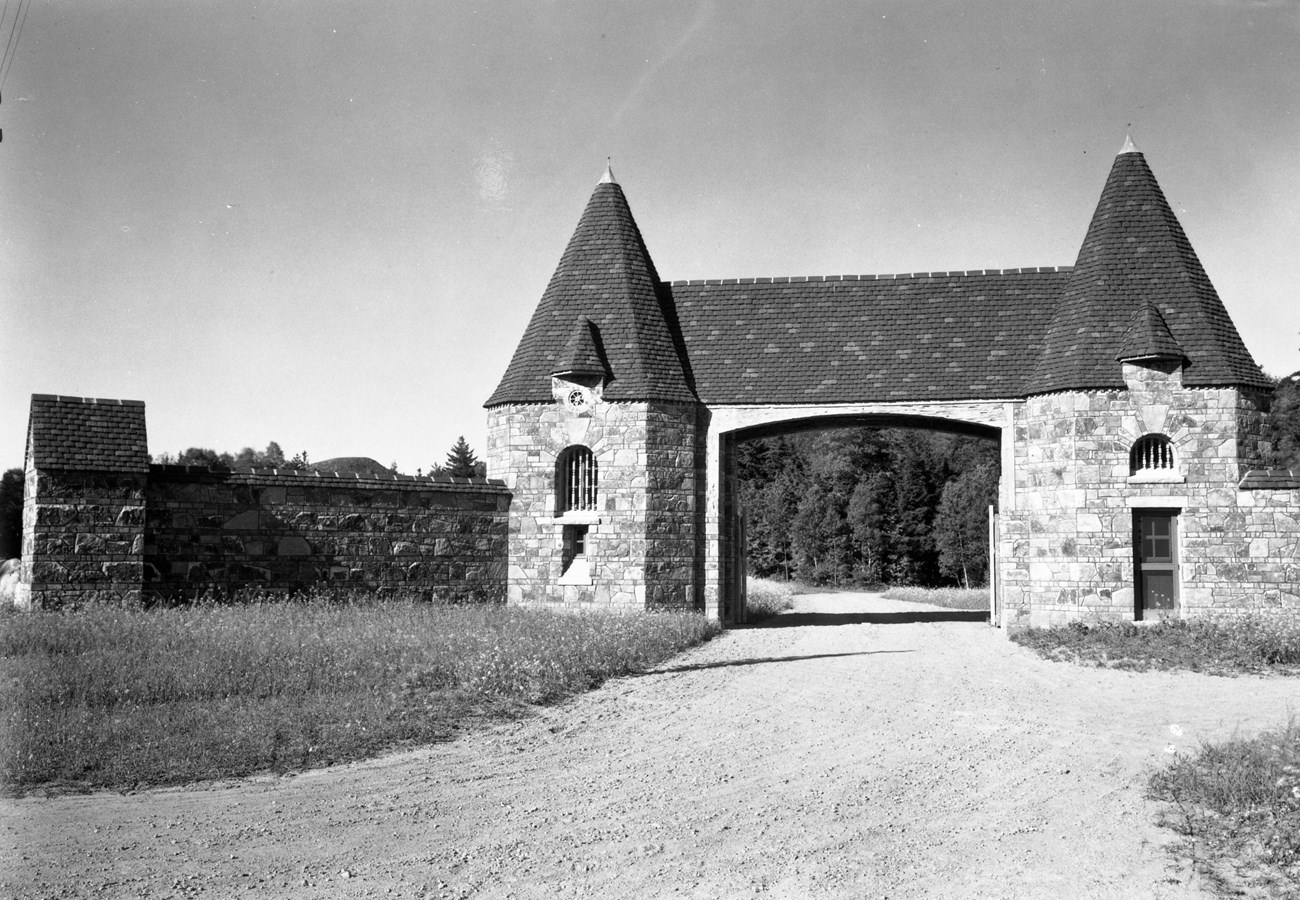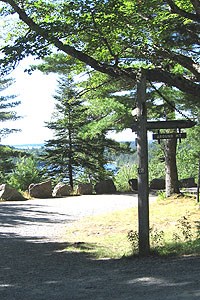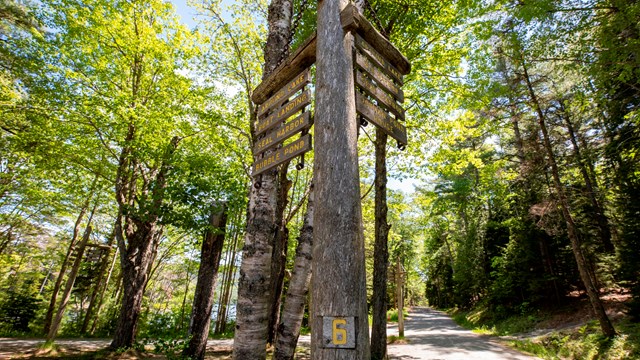
Courtesy National Park Service/Acadia National Park Forty-five miles of rustic carriage roads, the gift of philanthropist John D. Rockefeller Jr. and family, weave around the mountains and valleys of Acadia National Park. Rockefeller, a skilled horseman, wanted to travel on motor-free byways via horse and carriage into the heart of Mount Desert Island. His construction efforts from 1913 to 1940 resulted in roads with sweeping vistas and close-up views of the landscape. His love of road building ensured a state-of-the-art system. Rockefeller’s interest in road building grew naturally from his father’s. John D. Rockefeller Sr., the founder of Standard Oil, had built and landscaped carriage roads on his Ohio and New York estates. From his father the junior Rockefeller learned many techniques that he applied to building his Mount Desert Island carriage roads. 
NPS/Ginny Reams State-of-the-Art RoadsAcadia’s carriage roads are the best example of broken-stone roads—a type of road commonly used at the turn of the 20th century—in America today. They are true roads, approximately 16 feet wide, constructed with methods that required much hand labor. The roads were engineered to contend with Maine’s wet weather. Stone culverts, wide ditches, three layers of rock, and a substantial six- to eight-inch crown ensured good drainage. Rather than flattening hillsides to accommodate the roads, breast walls and retaining walls were built to preserve the line of hillsides and save trees. Rockefeller, naturally gifted with the eye of a landscape architect, aligned the roads to follow the contours of the land and to take advantage of scenic views. He graded the roads so they were not too steep or too sharply curved for horse-drawn carriages. Road crews quarried island granite for road material and bridge facing. Roadsides were landscaped with native vegetation such as blueberries and sweet fern. The use of native materials helped blend the roads into the natural landscape. An Integrated SystemRockefeller participated in the construction process. He walked areas staked out for road alignment and observed work in progress. He knew the laborers by name and used experts to design the bridges and engineer the roads. Throughout it all, he paid rapt attention to the most minute details, from the placement of coping stones to the cost of a running foot of road. Following are some elements that unify the carriage road system:
The result of Rockefeller’s vision and attention to detail is an integrated system of carriage roads that blends harmoniously with the landscape. The Carriage Roads TodayMaintaining the extensive carriage road system is no easy task, and the National Park Service could not do it alone. Between 1992 and 1995, an extensive rehabilitation of the carriage roads was financed by federal construction funds along with matching private funds from Friends of Acadia, a nonprofit organization dedicated to protecting the outstanding natural beauty, ecological vitality, and cultural distinctiveness of Acadia National Park and surrounding communities. Woody vegetation was removed from roads, shoulders, and ditches, and drainage systems were reestablished to arrest erosion. The crown and subgrade layers were restored, and new surface materials were applied to replace thousands of cubic yards washed away over the years. Coping stones were reset or replaced, and some of the historic vistas that once greeted horseback riders, carriage drivers, and walkers were reopened. EndowmentTo ensure that the carriage roads will continue to be maintained close to their original condition, the park has formed a partnership with Friends of Acadia. In 1995, Friends of Acadia established an endowment to help protect the carriage roads in perpetuity. Each year, the organization contributes more than $200,000 from this endowment to the park for carriage road maintenance. Volunteers working under the guidance of Friends of Acadia contribute thousands of hours cleaning ditches and culverts, clearing brush, and assisting park staff with other restoration projects. The commitment demonstrated by Friends of Acadia in maintaining the carriage roads is only one of many ways the organization helps support the park. A portion of park user fees, authorized by the Recreational Fee Demonstration Program, also helps fund carriage road maintenance. Between 2001 and 2004, federal funds and park user fees paid for a major re-pointing, cleaning, and water-proofing of all carriage road bridges within the park. User fees have also funded annual projects, including repairing stone walls and opening overgrown vistas. More than one hundred vistas have been cleared in the past ten years. A Spirit of PhilanthropyPark volunteers, visitors, and groups like Friends of Acadia are continuing a tradition of philanthropy begun by John D. Rockefeller Jr. and other early conservationists. Their valuable contributions of time, effort, and funds help protect the park and improve the quality of your experience. For more information about joining in these efforts, stop at Hulls Cove Visitor Center or visit the Friends of Acadia website. Such generous spirit allows the park to better meet its mission of protecting and preserving its cultural and natural resources for present and future generations. 
Carriage Roads
Bike, walk, or take your own horse along the 45 miles of carriage roads in Acadia. 
Historic Trails
Mount Desert Island’s present-day trail system evolved over centuries of human use and settlement of the land. More About Our Historic Carriage Roads |
Last updated: June 24, 2021
